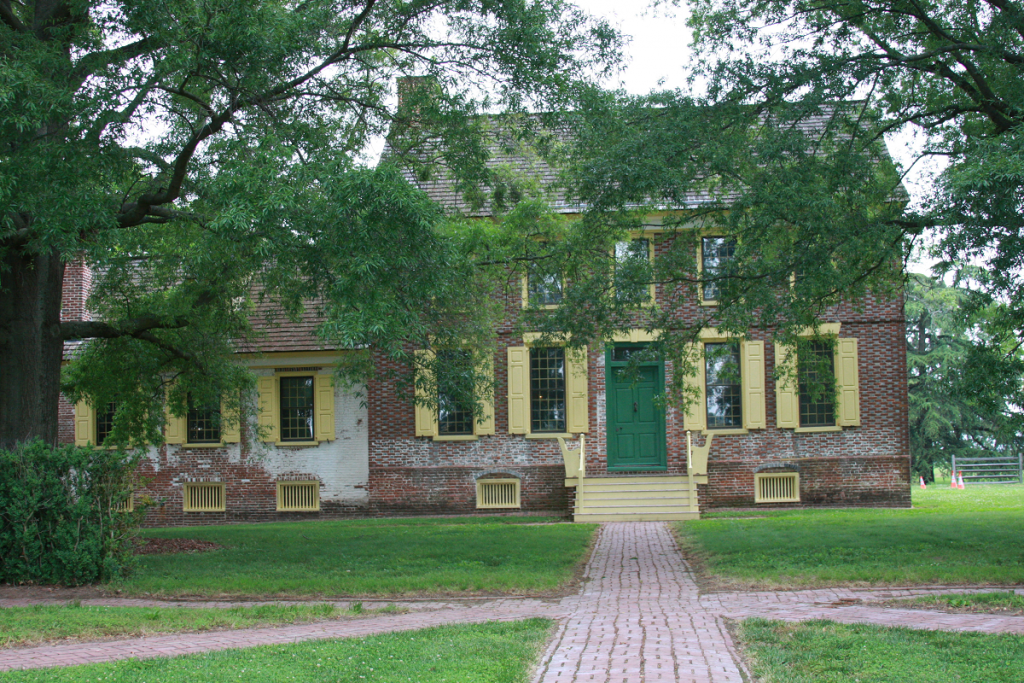June 3, 2022 @ 10:00 EDT
Site Visit #34
Someone at the Park Service (or more likely, a politician) realized that Delaware had no official units in the National Park System. There are plenty of historic and natural sites in the state that could be selected to remedy this “oversight”, but I guess they could not all agree on one place. This is how I envisioned First State National Historical Park came to be what it is. And what it is is a collection of historical sites from Dover, in the center of the state, to New Castle in the north. I was able to stop by some of the sites as I swung through the state and learned a few things along the way.
Perhaps most surprising is that Delaware was not really a separate colony like New York or Virginia were. It was technically a part of Pennsylvania, given to William Penn in response to his request for ocean access for his colony. Delaware has three counties, which were thus considered the southeastern counties of Pennsylvania. However, tensions grew in the first half of the 18th century between Pennsylvania proper and those three colonies. Pennsylvania was a strong Quaker colony, and the Delaware counties were not. They were eventually granted autonomy within Pennsylvania but declared themselves free and independent of Pennsylvania AND Great Britain in June, 1776, a month before all of the colonies voted for independence.

Tying into the vote for independence, another site I visited was the plantation home of John Dickinson. Dickinson was a delegate for Pennsylvania at the second Continental Congress but was opposed to independence at that time. He abstained rather than vote “No” so that the motion to declare independence could pass unopposed. Once passed, though, he supported the cause and actually joined the army, fighting in a few engagements before being convinced that he was more valuable alive. He showed that to be true as a delegate (now of Delaware) to the Constitutional Convention of 1787 and contributed to the new constitution. His support of the document was one of the catalysts pushing Delaware to ratify the new constitution on December 7, 1787 – the first state to do so. Being located right next to Philadelphia probably helped in that honor too, as it did with New Jersey and Pennsylvania, being 2nd and 3rd to ratify, only days later.
I stopped in Dover, parking next to Dover Green, and visited the John Bell house, an original structure from the 1770s. Inside were two charming ladies, one in colonial dress, which I found out, she made herself. She showed me a small album of the many period outfits she has made, something she really enjoys and appears to be quite good at.
From there, I crossed the Green to the old state house, where I got passport stamps, then I went to the nearby corner where a plaque marks the location of the Golden Fleece Tavern. In typical 18th century style, legislators met in this tavern to ratify the Constitution over a pint or two. The tavern is gone, having been replaced by a hotel in the early 19th century, which stands today as a specialty store. A sign hangs outside commemorating the Golden Fleece.
Finally, I stopped in New Castle. The visitor center is in the former arsenal on a true cobblestone street. Driving more than 5 mph on this road will do wonders to one’s suspension (both the car’s and body’s). Inside there were posters about New Castle’s history and a short movie on the same. This city served as the capital of Delaware for a short time. Outside, I wandered the nearby commercial area featuring small specialty shops in buildings that, if not original, were designed to look so. Along the street were many four-flag displays, featuring the Dutch, Swedish, British, and American flags – the four nations that have at some point, ruled over Delaware.
As far as I could tell, all of the units that make up First State National Historical Park are actually managed by either state or local entities. The National Park Service has passport stamps, and offers its standard brochure at each location, but the employees all work for a local agency. This also means that there are no signs with the park service name that I can include in my photo collection. That’s now two days in a row that I cannot get a photo that I had expected to get at all parks.
Though this unit was clearly just tossed together from state and local parks so Delaware could have a National Park site, it was still a very interesting day, and yet another “park” in which I learned something new.
Steve